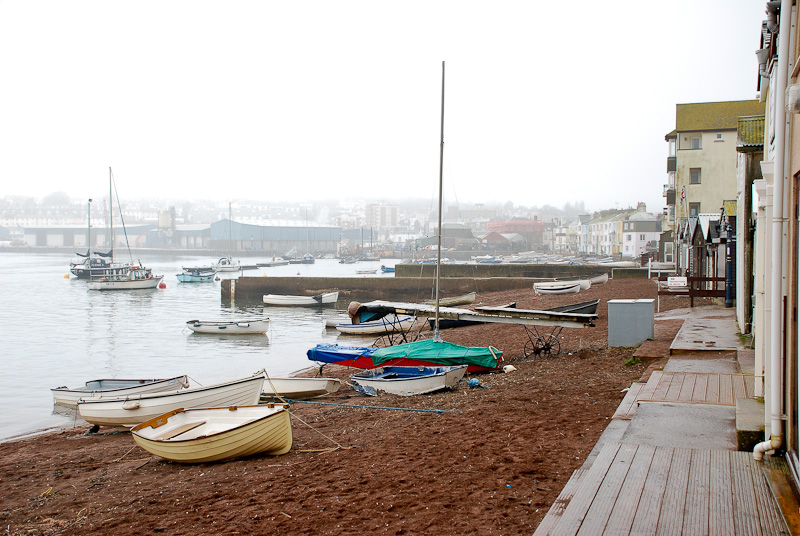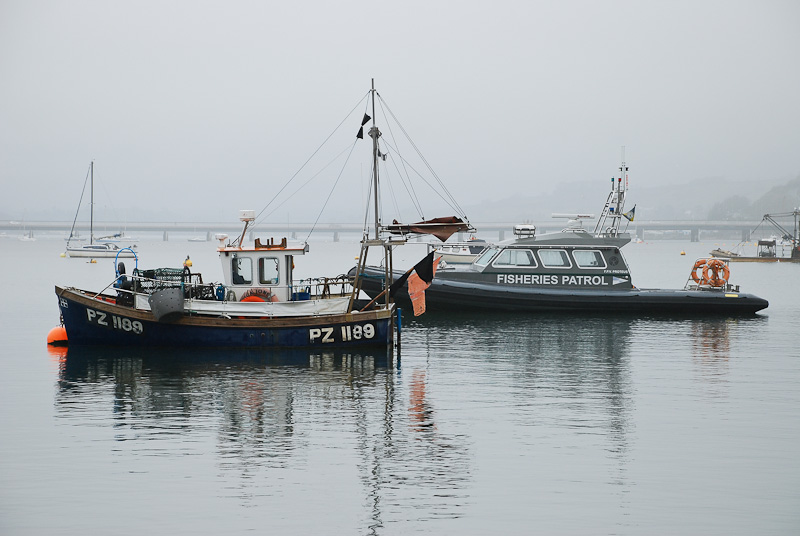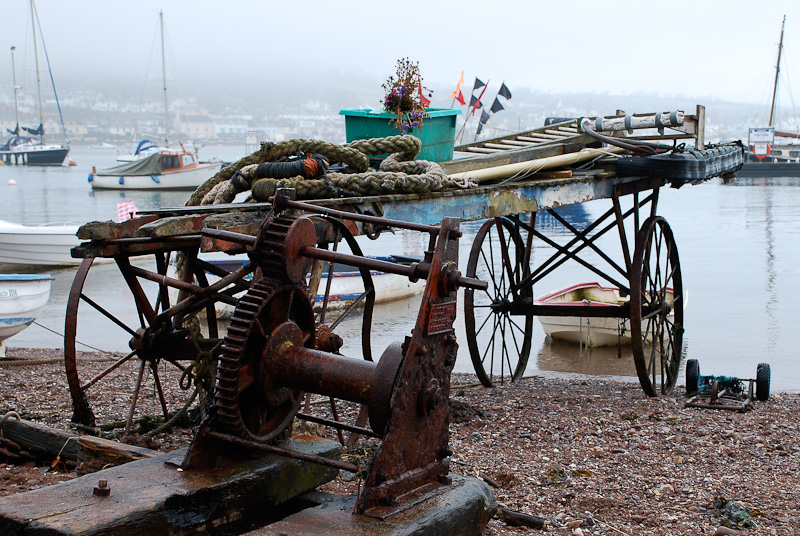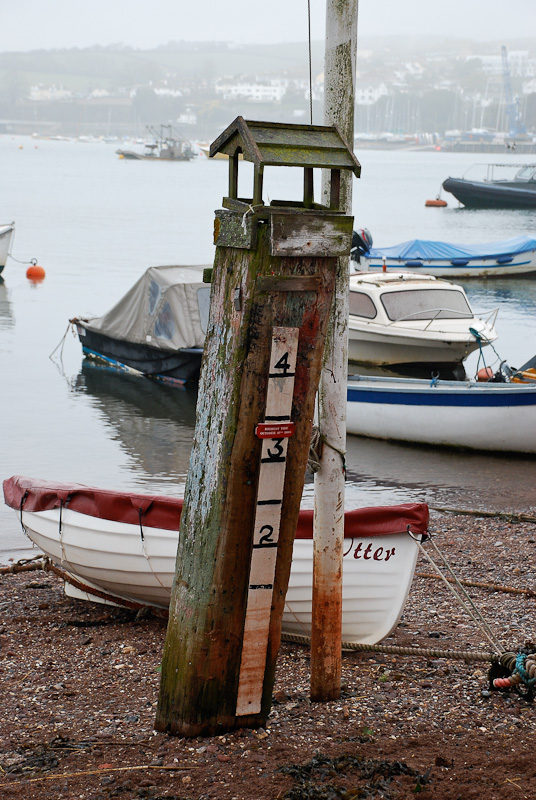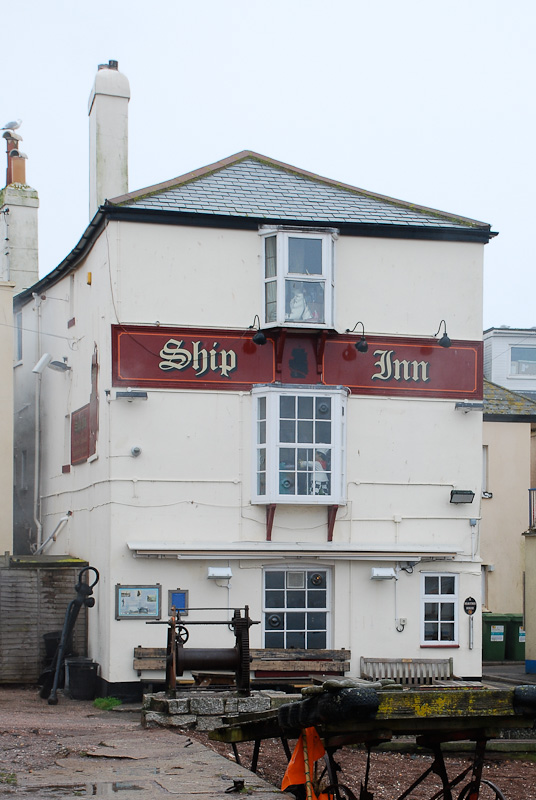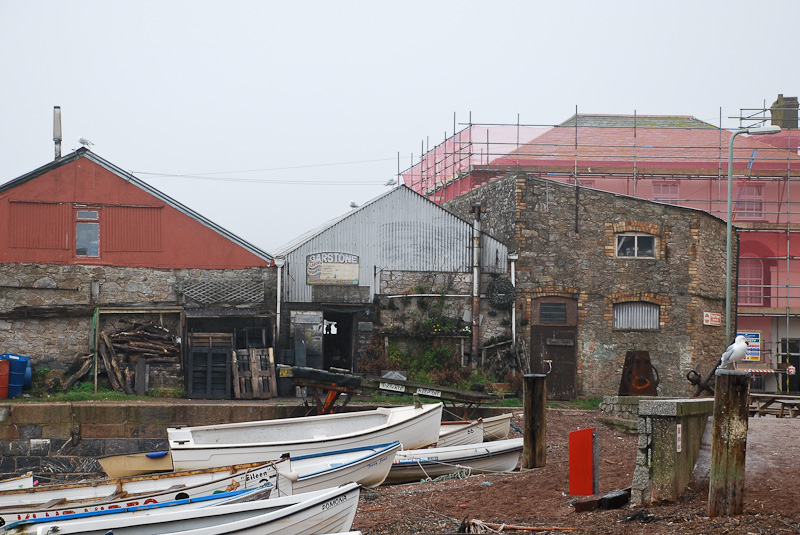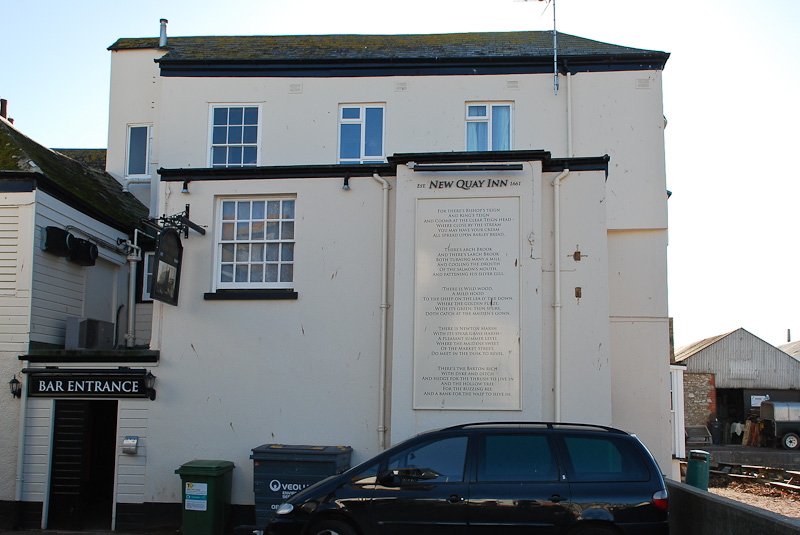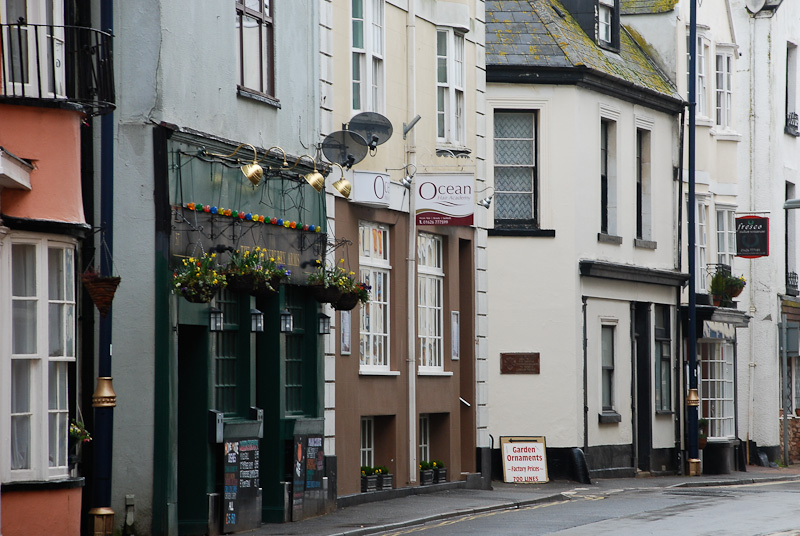In 1818 John Keats stayed with his brother Tom in what was then known as ‘East Teignmouth’. The upper part of the town has been drastically altered by development over recent years and doesn’t look particularly attractive to anyone passing through by car, but the area around Back Beach is well worth exploring, especially on a weekday outside of the holiday season when the narrow streets between the estuary and the seafront promenade are mostly empty, and the history of the river and quays becomes more apparent.
For anyone not familiar with the area the Point car park at the mouth of the Teign is a good place to start from – find it by following the signs for the seafront, then carry on past the pier and the lighthouse to the end of the main promenade. On a calm day at low tide the ‘untumultuous fringe of silver foam along the flat brown sand’ is just as Keats describes it in his ‘Epistle to J. H. Reynolds’, but the road bridge to Shaldon which now closes off the view upriver wasn’t built until 1827, and in his time the ferry service (which still runs in summer) was the only means of crossing the river for a ‘fine clamber over the rocks’ towards ‘Babbicun’.
On the inland side of the car park a flight of steps leads down to the river’s edge, and an interesting clutter of huts, gear and boardwalks. It’s a good idea to check the tide tables for the area before planning your visit, otherwise the sands may not be accessible and you’ll miss one of the the most interesting bits of the walk. Watch out also for the mooring lines trailing across the beach, especially if you’re distracted by taking photos and want to avoid falling flat on top of your camera.
Teignmouth’s connection with ships and shipbuilding was already established by the fourteenth century, when it was recorded as being one of the main ports in south Devon. From the mid-sixteenth century onwards men from the town sailed to the Newfoundland cod fisheries, spending six months of each year away from home.
In a letter to Mary-Ann Jeffery written twelve months after his stay in her mother’s lodging house, Keats asks her to ‘Enquire in the villages round Teignmouth if there is any Lodging commodious for its cheapness, and let me know where it is and what price.’ His concern that Mary-Ann should ‘let no one in Teignmouth know any thing of this’ seems genuine, and his further comments ‘Especially dont let the Newfoundland fisherman know it — and especially no one else’ suggest some kind of falling-out may have taken place between the twenty-two year old poet and some of the residents during his two-month stay.
According to Viv Wilson’s book, Teignmouth Then & Now, the massive old posts placed at intervals along the beach were originally used for mooring sailing ships under repair – this one has been ingeniously adapted for new uses.
On Friday 17 April, 1818, Keats wrote to his friend J. H. Reynolds, ‘I am going this morning to take a fac simile of a Letter of Nelson’s very much to his honour –‘.
Although the population in 1805 was only around 2000 people, a blue plaque on the wall of the Ship Inn records fourteen natives of Teignmouth who fought in the Battle of Trafalgar. An excellent leaflet published by the Teignmouth and Shaldon Museum (Monograph 10: Teignmouth – Trafalgar) provides further details, including their names, ranks and the ships they served on. A small map inside the back cover gives some idea of how relatively undeveloped this exposed area of reclaimed marshland was at that time.
Beyond the Ship Inn a footpath continues across the New Quay to the New Quay Inn (hidden behind scaffolding and safety nets in this picture). Keep a look out for the various leftovers from the past – as well as anchors there are mounds of enormous chains piled on the quay, and a few partly-buried mooring rings are visible here and there underfoot. The quay was constructed by George Templar in 1820, two years after the Keats brothers’ departure – at the time of their stay the inn was known by its earlier name of the Newfoundland Fishery.
The north side of the New Quay Inn hosts a seagull-splattered display of Keats’ poem ‘For there’s Bishop’s Teign’ (see Ray Girvan’s article ‘Keats in Teignmouth’ for more information on this poem as well as the complete text). Northumberland Place can be reached via any of the narrow lanes leading away from the river, but before turning inland it’s worth taking a look at the Fish Quay and the docks. The fourteenth-century port has developed into a thriving operation which dominates the western section of the waterfront and exports around 200,000 tonnes of ball clay per year, as well as handling animal feed, stone chippings, and timber. The Pike Ward warehouse, which was once used to store salt cod brought back from Newfoundland, is now the only surviving eighteenth-century building in this area of the harbour.
New Quay Street is undoubtedly tidier than it was when Keats knew it, but the buildings are still uncomfortably close to the river, and the new flood defence scheme starting in January 2012 is going to have a considerable impact on this part of town. Back Beach, which is remarkably untouched at present, will presumably become a much more enclosed space, so a visit between now and January is highly recommended.
Numbers 35 and 20, Northumberland Place, the two houses where Keats is thought to have lived during his stay in Teignmouth, are on opposite sides of the street – number 35 is the pink bay-fronted house just visible on the far left of this picture. As mentioned in previous posts, local opinion seems inclined to favour this location, although number 20 was eventually allocated the plaque. Northumberland Place has a good secondhand bookshop and the substantial frontage of the Devon Arms is a reminder that in the early nineteenth century this thoroughfare, known as the Strand, would have been a bustling part of town.
The walk from here back to the Point car park can be extended or shortened as preferred – the Keats brothers almost certainly strolled out onto The Den in fine weather, although it’s difficult now to picture it as described by Viv Wilson: ‘an area of undulating sand dunes where sheep grazed and fishermen spread their nets’. The lighthouse was constructed in 1845 and the Pier in 1865, but Courtenay Place dates from 1805, and Den House, close to East Teignmouth’s ancient parish church, was built in 1800. In 1818 St Michael’s had a thatched roof and distinctive towers but both it and St James’s in West Teignmouth were rebuilt in 1819-20 to provide more seating for the increasing numbers of summer visitors. The Teignmouth New Theatre in Station Road, where Edmund Kean once performed and where Keats ‘got insulted’, closed in the 1820s, but according to the museum booklet a wall plaque marks the site. The present branch of W.H Smiths in the Triangle occupies the building which housed Croydon’s Library of 1815, and which later became The Royal Library – the name is visible above the shop front.
Teignmouth has many other literary associations – the Keats connection has brought various pilgrims and Wilfred Owen, Charles Causley and Amy Lowell have each written poems about his stay. Fanny Burney, Edmund Gosse and Winthrop Mackworth Praed all spent time here, and Jane Austen may have stayed at Den House during her visit circa 1802. Turner painted Teignmouth Devonshire, and Babbacombe Bay from Teignmouth Beach during his tour through south Devon in 1811 and the marine artist Thomas Luny made his home in the town from 1800-1837. Although there’s some dispute as to whether Charles Babbage was born in Teignmouth or in London he was certainly married here in 1814, at St Michael’s church where his father was a churchwarden, and his family lived at Rowdens House, close to the Dawlish Road. The building was destroyed by fire in 1844 and another house was later built on the site.
RECOMMENDED READING
Viv Wilson’s series of books are very useful and usually available from the Quayside Bookshop in Northumberland Place – I used Teignmouth Then and Now to research my visits.
Teignmouth and Shaldon Museum sells a good selection of reasonably priced monographs which pack a lot of interesting information into a few pages. No. 7: A Potted History of Teignmouth, and No. 10: Teignmouth – Trafalgar were essential to the writing of this piece, and the staff also provided me with generous background material relating to Keats’ stay.
A booklet available from the Tourist Information Office, The Teignmouth and Dawlish Way, includes the Back Beach section of this walk as part of a 14 mile trail linking the two towns. The trail can be broken down into eight stages and as well as full directions the booklet includes sections of the relevant bits of the OS map, colour photos of points of interest and plenty of interesting snippets of local information.
Text and photos © Angela Williams, 2008-2011
